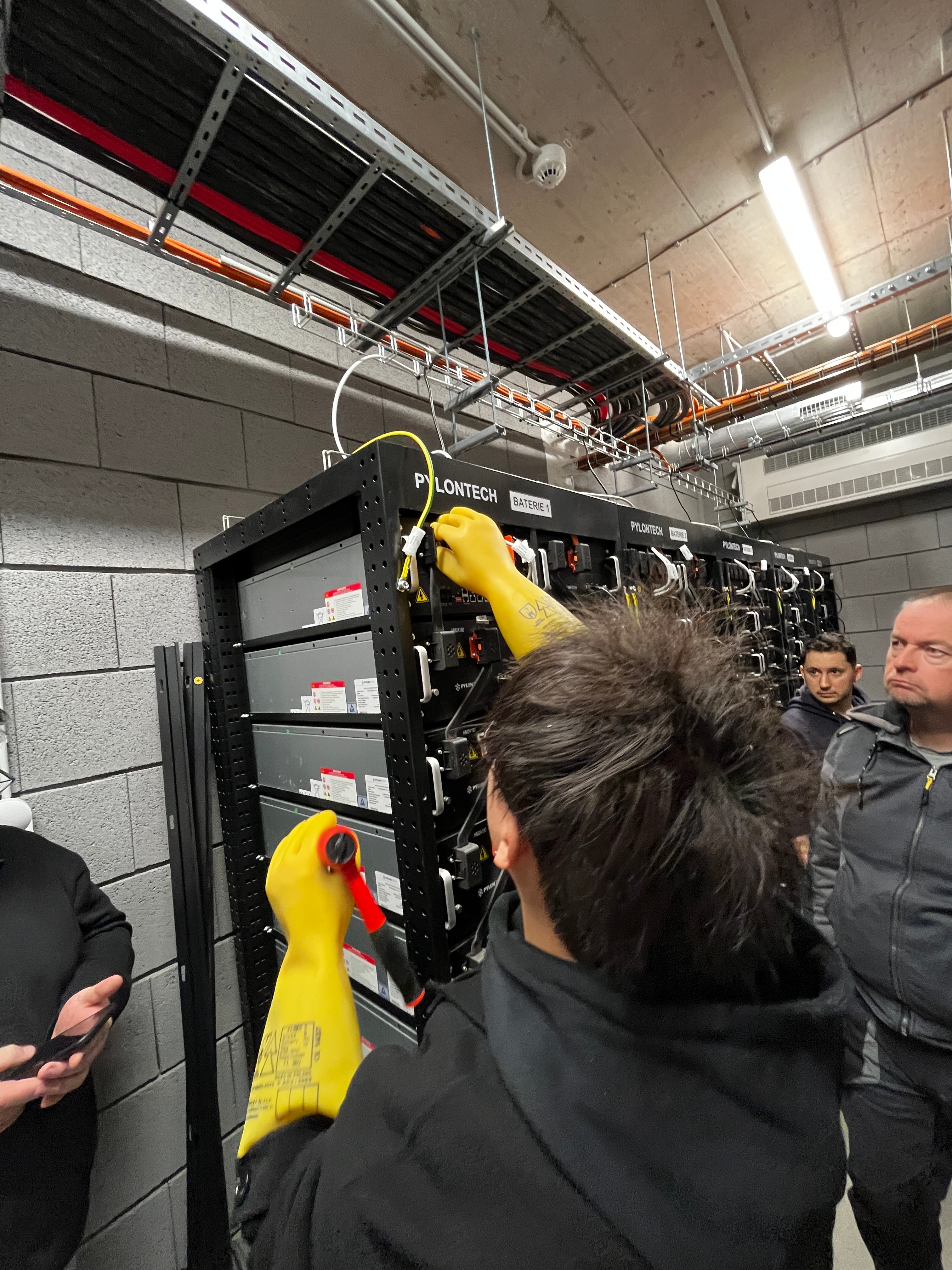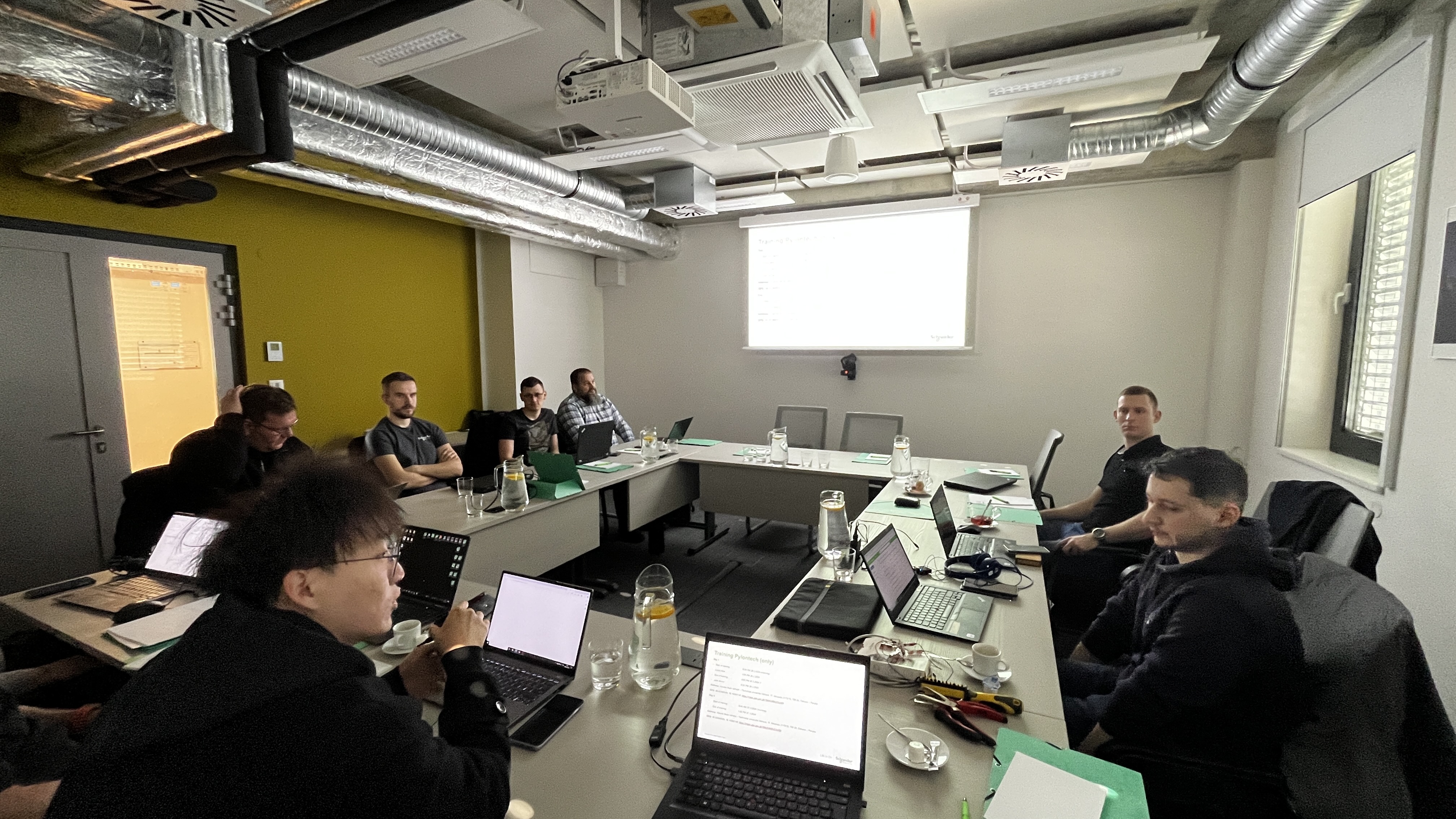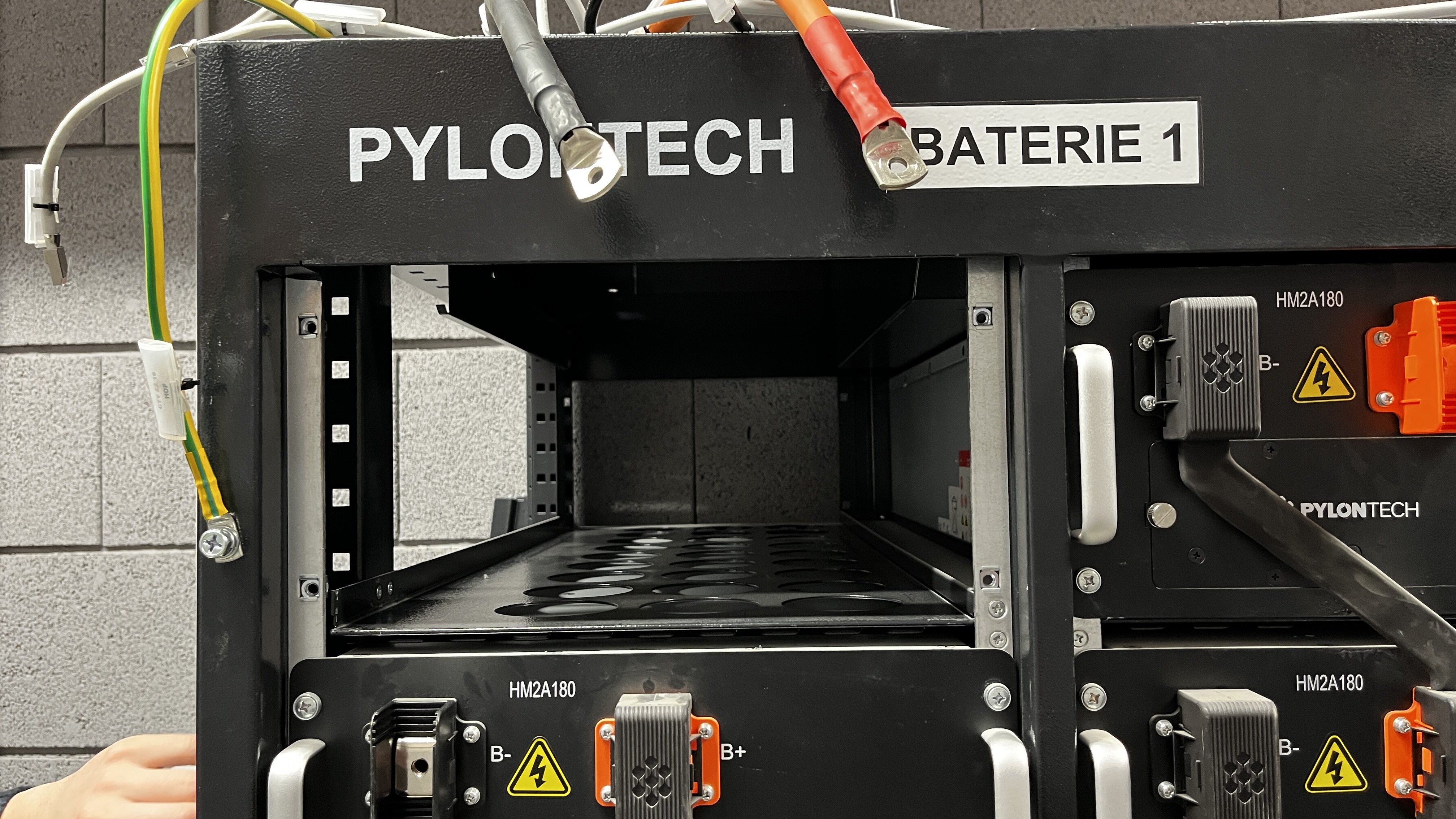Thanks to the combination of these technologies, we expect an energy yield of about 83,000 kWh per year with the help of 473 solar panels, where the main benefit is clearly the reduction of CO2 emissions to 40,000kg/year.
Other benefits then include reduced energy costs, reduced carbon footprint, ensuring reliability of power from local generation facilities, ability to operate independently, start from darkness, smooth grid-to-island transitions, voltage and frequency stabilization, smoothing out unstable supply from renewable sources or loads.

As the technologies of all three technology leaders in the field of storage are connected in the CEETe building, the meeting place for the Chinese delegation was more than clear.
The discussion led towards the presentation of the technical solution and the concrete application of the system. Furthermore, the technical and safety limitations of these technologies, installation and basic setup of the system and system functions, consultation over preventive measures and firmware updates for smooth operation of all technologies were discussed.

The whole programme was led by the Director of the ENET Centre doc. Ing. Lukas Prokop, Ph.D., who evaluated the meeting as very successful.
